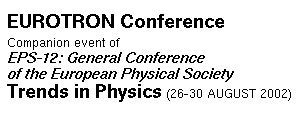 |
 |
 |
Ion Beam Analysis (IBA) is a general name of wide group of analytical methods, based on the observation and analysis of various particles emerging from the investigated sample under MeV energy ion impact. The most widespread IBA techniques are:
|
name |
observed particle |
|
|
RBS |
Rutherford Backscattering Spectrometry |
elastically scattered ions |
|
ERDA |
Elastic Recoil Detection Analysis |
elastically recoiled target atoms |
|
NRA |
Nuclear Reaction Analysis |
nuclear reaction products (p, alfa, gamma...) |
|
PIXE |
Proton Induced X-ray Emission |
characteristic X-rays |
RBS, the first IBA method, was introduced for thin film analysis in the field of semiconductor technology in the early 1960's. Since then, new IBA methods are continuously developed and applied in various fields of application. Today it is routine to determine the depth distribution of almost all the elements and isotopes in the first few micrometer of the sample with sensitivities of a few tenths or hundreds of at% and with a depth resolution of a few nm (near to surface). The lateral size of the investigated spot in most cases is a few mm2, but in microbeam facilities the beam size can be reduced to few micrometer2. IBA is not sensitive to chemistry, gives reliable information only on the elements existing in the sample.
To remain competitive with other surface sensitive analitical methods unique features of IBA have to be developed. In the years past some remarkable results have been achieved. The sensitivity of the method can be extremely good using coincidence detection methods (e.g. H detection with ERDA using H ions) or AMS (Accelerator mass spectrometry). Atomic scale depth resolution can be achieved using magnetic or electrostatic spectrometers. Application of time of flight energy determination forecasts also significant improvements. The lateral resolution of few hundred keV Focussed Ion Beam devices, applying electrostatic focusing, is now being to reach the few nm scale. The impurity lattice localisation by channelling with sub-angstrom spatial resolution still remains an attractive feature. New IBA setups using compact accelerators of 1 MeV energy are now available in the market.
The following files are available:
- symp1paszti.pdf [16721 bytes]
- symp1paszti.doc [41472 bytes]
Eurotron Conference is supported by European Commission, High-Level Scientific Conferences